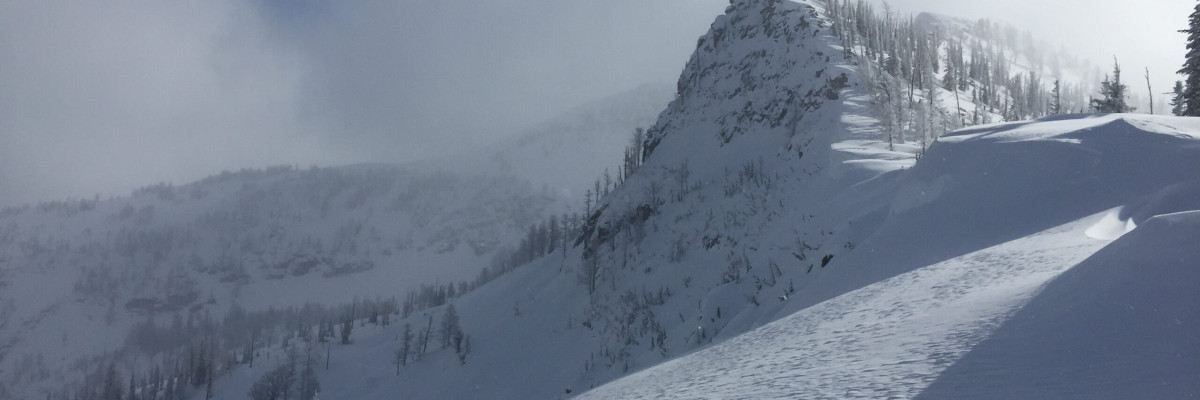The current avalanche danger is MODERATE on wind loaded terrain for the West Central Montana Backcountry. Human triggered avalanches are possible on specific terrain, careful evaluation of avalanche conditions are necessary to recreate today.
Good morning, this is Logan King with the West Central Montana Avalanche Center’s avalanche advisory for Thursday, February 2, 2017. This danger rating does not apply to operating ski areas, expires at midnight tonight and is the sole responsibility of the U.S. Forest Service.
Weather and Snowpack
Since Tuesday morning an additional 7-14 inches of snow has accumulated in the advisory area. The new snow has added .6-.9 inches of SWE. Winds this morning are out of the East at Point 6 and range from 27-36 mph. At Deer Mountain in the southern Bitterroot winds are calm this morning.
Yesterday Tim and I rode into Twin Lakes and found nearly a foot of new low density snow. Travis found similar conditions while touring in the Rattlesnake. The new low density snow is easily transported and Travis found debris from a naturally released windslab from Tuesday night (pic). Tim and I found active transporting and were able to get some small results in wind loaded terrain with ski cutting. On our ride out we saw a few windslabs that released naturally during the day yesterday (pic1) (pic2). With the activity observed yesterday paired with the wind loading we observed the primary avalanche concern will be windslabs. Identify terrain that appears to be wind loaded and carefully evaluate consequences of an avalanche.
With a large amount of loose dry surface snow, sluffs and loose dry avalanches will be likely in steep terrain. Carefully evaluate the consequences of a loose snow slide as there is a significant amount of snow that can be entrained.
Finally persistent slabs were not reactive yesterday but will still be a bit suspect and will need some time to adjust to the new load. Take the time to dig and see what is under the new surface snow and be cautious of any persistent weak layer that has a slab above it.
Avalanche and Weather Outlook
As a little more moisture moves in, it will bring some light accumulating snow to most areas today. With minimal accumulations expected, avalanche conditions will remain the same today. The next round of significant snow looks to start Friday and continue through Monday.
If you are out in the backcountry, please feel free to share your observations on our public observations page, they are a great resource and are very helpful in producing the advisory. Travis will issue the next advisory on Saturday, February 4 , 2017.
Ski and ride safe.














